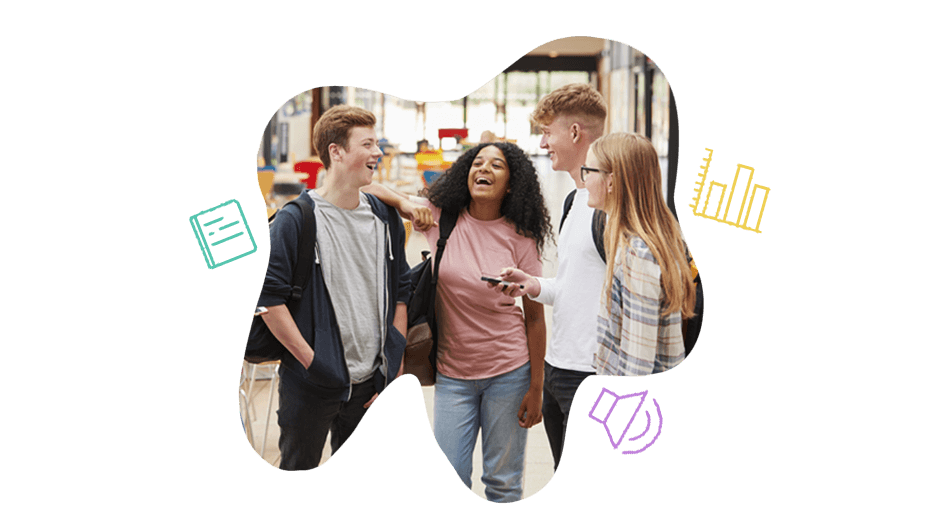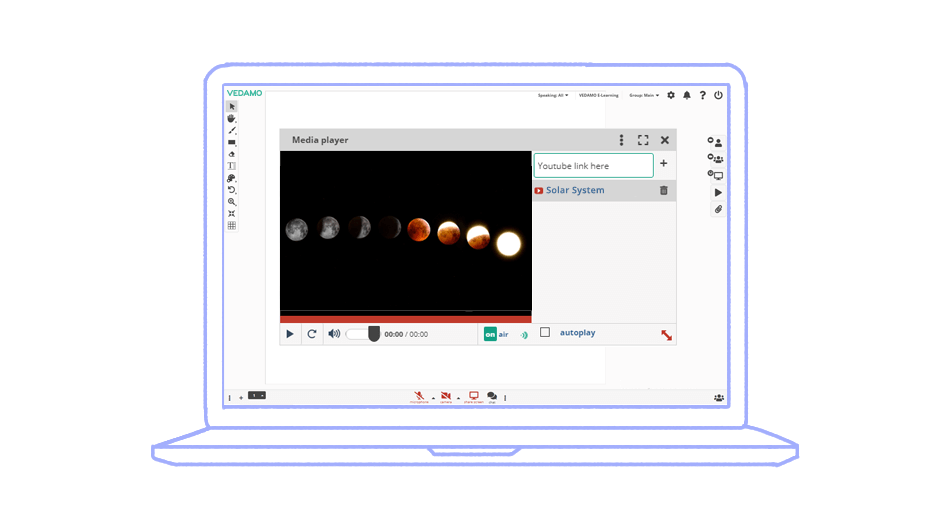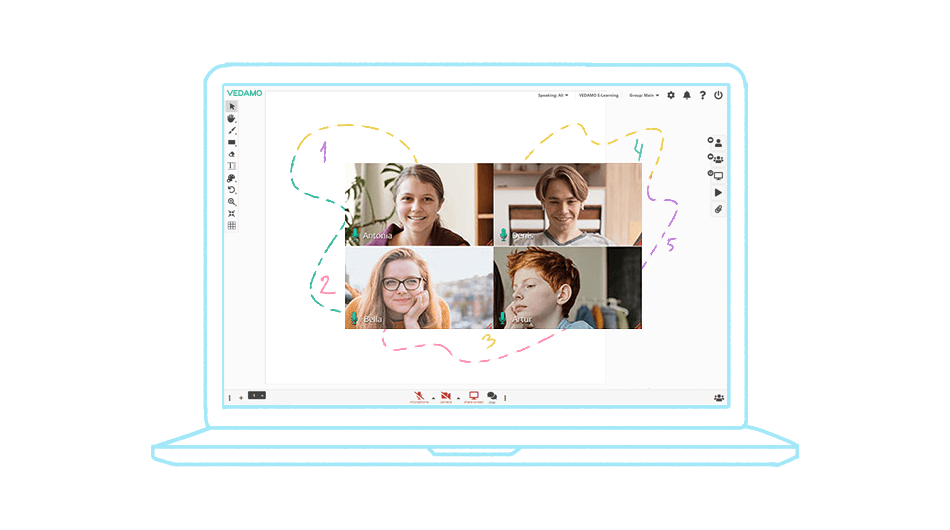What makes online lessons more effective and engaging? The best way to set your students up for success is to ensure that their learning experience is pleasant and motivating, and that lesson content is easy to understand. However, in online education, there is no such thing as “one size fits all.” Students often have different learning styles. For instance, visual learners prefer activities with visual stimulants, such as content that is presented in the form of images, diagrams, colorful visuals, etc., while auditory learners feel more engaged by activities that involve music, speaking, etc.
The first step in designing the best online lessons for your students is to understand their needs. The second step is to find which tools in the virtual classroom can help you create a more effective and interesting content for diverse learners.

How can you meet the learning needs of your students?
Verbal learners
Verbal learners are best motivated by activities that include speaking and writing. The perfect way to grab their interest is by including exercises and games that center around reading, word puzzles, storytelling, and discussions. Students who are verbal learners love to express themselves in an environment that’s open for discussions, sharing, and even debates. How can you incorporate activities for your verbal learners by using the tools from the virtual classroom? Live videoconferencing and the online whiteboard are awesome tools for all kinds of activities that encourage students to verbally express themselves, such as participating in brainstorming exercises, storytelling, word riddles, etc.
Visual learners
Visual learners are most interested in content that is presented through visual means like photos, diagrams, doodles, images, and videos. Students who prefer this type of content usually have a more creative nature and get inspired by different activities that boost their creativity and imagination. The online whiteboard is a great tool in the virtual learning space where the visual learners can easily use the features for drawing, creating diagrams, doodling, and sharing multimedia to express themselves and to learn new concepts. The online whiteboard is a collaborative tool where the teacher can present content while the students can participate by completing tasks, taking notes, and adding ideas.
Auditory learners
Auditory learners are most influenced by sounds and music. Therefore, it is recommended to always find a way to incorporate some activities into the lesson that include singing, music, or other tunes related to topic of the lesson. Voice and music have a strong impact on auditory learners. Videoconferencing in real time opens up a lot of opportunities for the teacher to include activities for the auditory learners in the form of singing, rhythms, and dancing. The virtual classroom’s media player is another wonderful tool to use for sharing multimedia content such as music, tunes, sounds, and other audio files.

Social learners
Social learners are all about interaction and collaboration. Teamwork comes naturally to this type of learner. Group activities are a wonderful way to keep them engaged and inspired. The online whiteboard is the best tool to use in the virtual classroom to engage students in collaborative activities. Group exercises and tasks are easy to implement through using the breakout-room feature of the virtual learning space. Divide students into groups and give them assignments related to the lesson. Each team can use their own online whiteboard and share ideas and information in real time. Roleplaying exercises are also a great way to provide an extraordinary learning experience for the social learners. Start a storytelling session on the topic of your lesson and then turn it into a roleplaying activity to make the content even more exciting and remarkable for the students.

Physical learners
Is it possible to make the lessons more engaging for the physical learners when teaching online? Yes! Physical learners are motivated by hands-on activities. They love exercises that involve action. Use the online whiteboard to create mysteries for solving, to play learning games, and even to organize competitions and talent shows if the topics allow for it.
Logical learners
Logical learners are drawn to content that stimulates their critical thinking and logic. Topics like math, programming, and history are usually very exciting for this type of learner. The online whiteboard provides the perfect environment for presenting math problems and puzzles, mystery-solving challenges, discussing historic cases and topics, and more.
The main strategy for success in designing online lessons is diversity. Make sure that you incorporate various types of content for your students and be flexible and ready to adjust the lessons according to their interest, skills, and learning styles.
